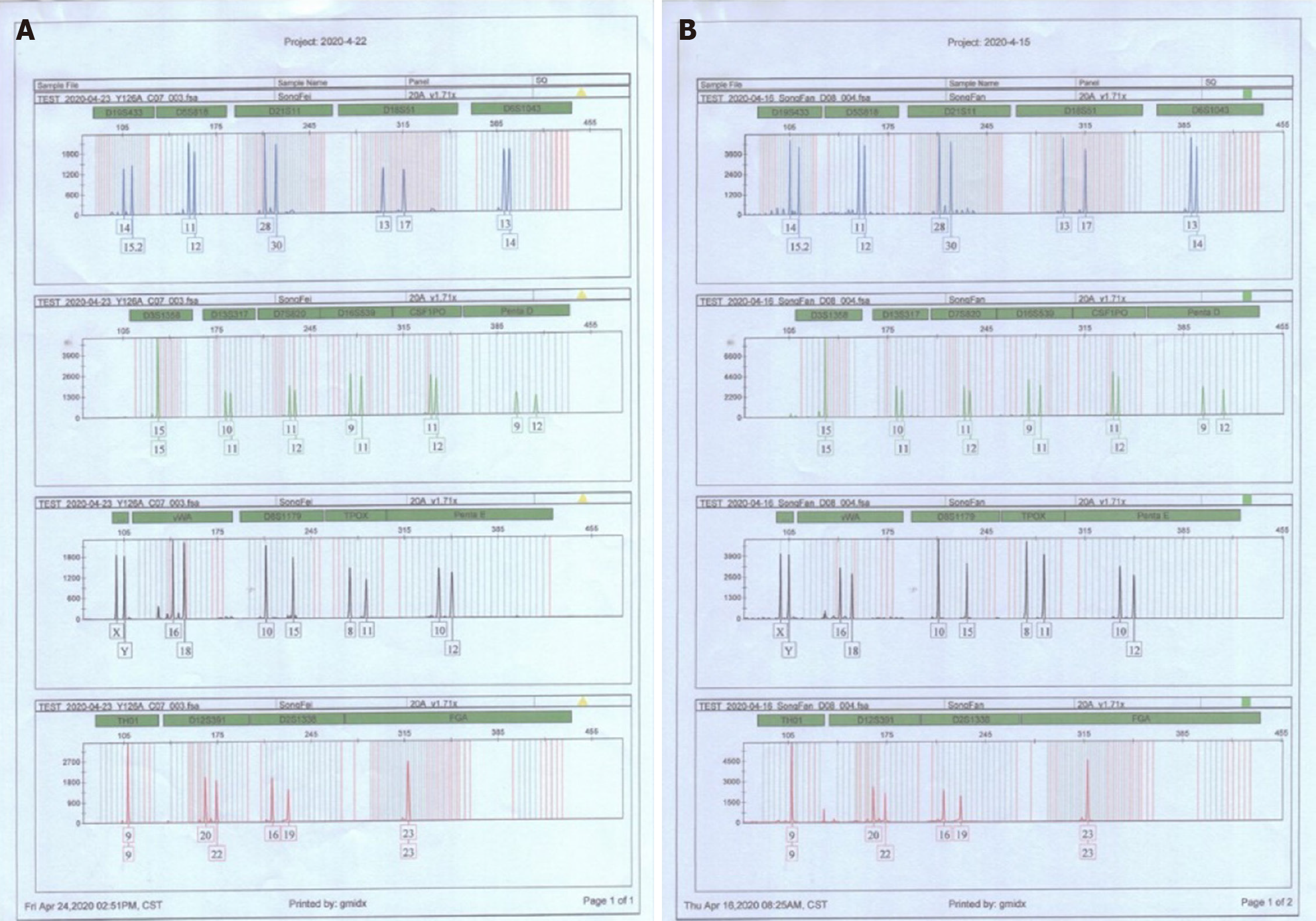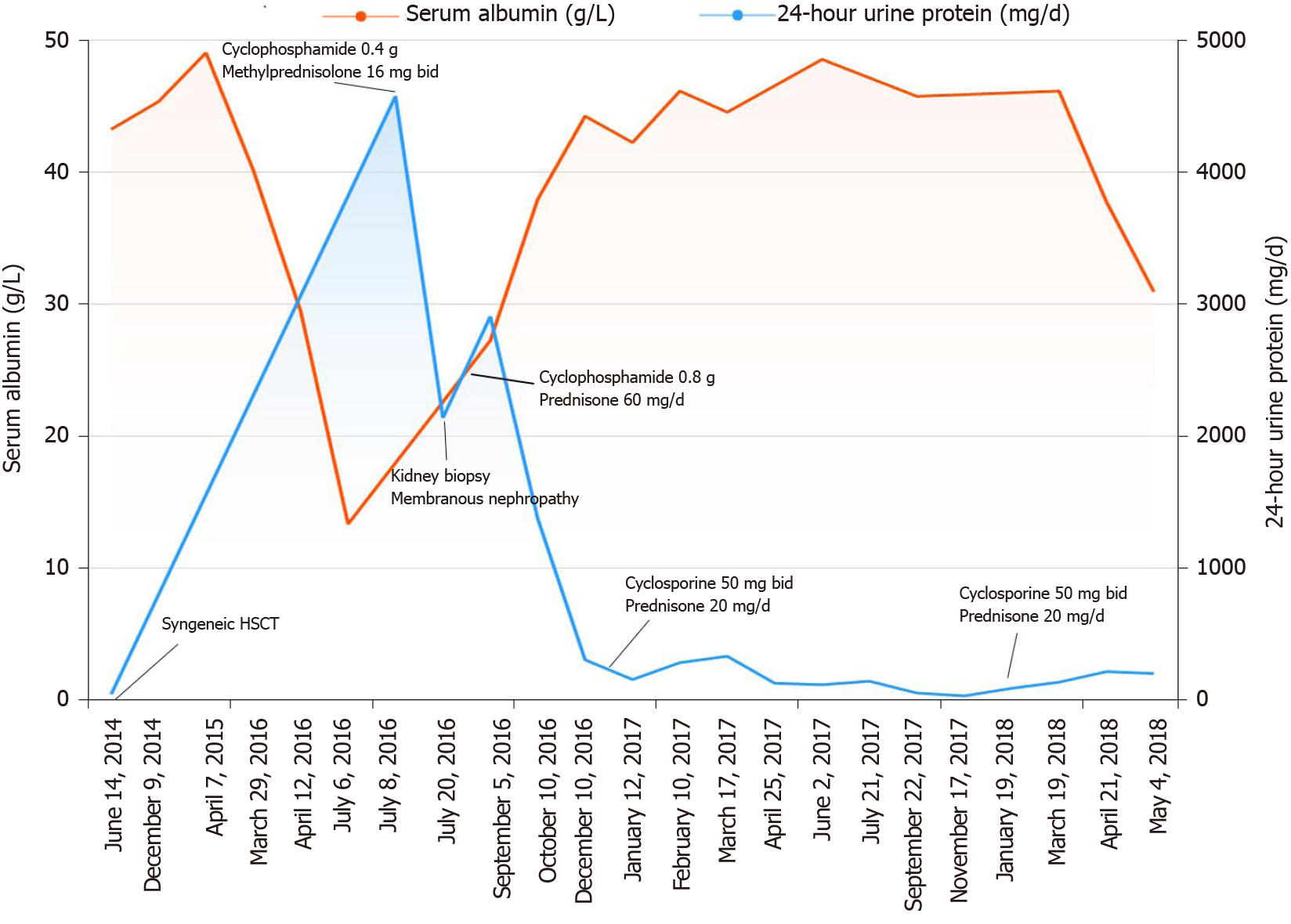Copyright
©The Author(s) 2021.
World J Clin Cases. Jan 26, 2021; 9(3): 614-622
Published online Jan 26, 2021. doi: 10.12998/wjcc.v9.i3.614
Published online Jan 26, 2021. doi: 10.12998/wjcc.v9.i3.614
Figure 1 Specific medication scheme for syngeneic hematopoietic stem cell transplantation.
ATG: Antithymocyte globulin; CTX: Cyclophosphamide; MTX: Methotrexate; VP-16: Etoposide; VPA: Valproate sodium.
Figure 2 Results of the short tandem repeat analyses.
A: Donor results; B: Recipient results.
Figure 3 Renal biopsy findings.
A and B: Mesangial hypercellularity was mild. Mesangial matrix expansion was light, and few intracapillary fibrin thrombi were observed. The capillaries were open, showing a few microthromboses. Basement membrane thickening was observed, with a small number of capsule adhesions but no double contours or spikes; C: Immunoglobulin (Ig) G: Diffuse granular immune reactant on the basement membrane (++++); D: IgA: Diffuse granular immune reactant on the basement membrane (+), electron microscopy; E and F: A large number of fibroblasts were seen in Bowman's space. There were epithelial electron dense deposits in the glomeruli.
Figure 4 Trends in 24-h urine protein and serum creatinine levels during treatment.
Scr: Serum creatinine.
Figure 5 Trends in the 24-h urine protein and serum albumin levels during treatment.
After treatment with steroid hormones, cyclophosphamide and cyclosporine, the 24-h urinary protein level was significantly reduced and maintained at normal levels for a long period of time.
Figure 6 Medication options for patients during treatment.
CsA: Cyclosporine A; CTX: Cyclophosphamide; GC: Glucocorticoid; IS: Immunosuppressant.
- Citation: Bai MC, Wu JJ, Miao KR, Zhu JF, Mao HJ. Nephrotic syndrome in syngeneic hematopoietic stem cell transplantation recipients: A case report. World J Clin Cases 2021; 9(3): 614-622
- URL: https://www.wjgnet.com/2307-8960/full/v9/i3/614.htm
- DOI: https://dx.doi.org/10.12998/wjcc.v9.i3.614














